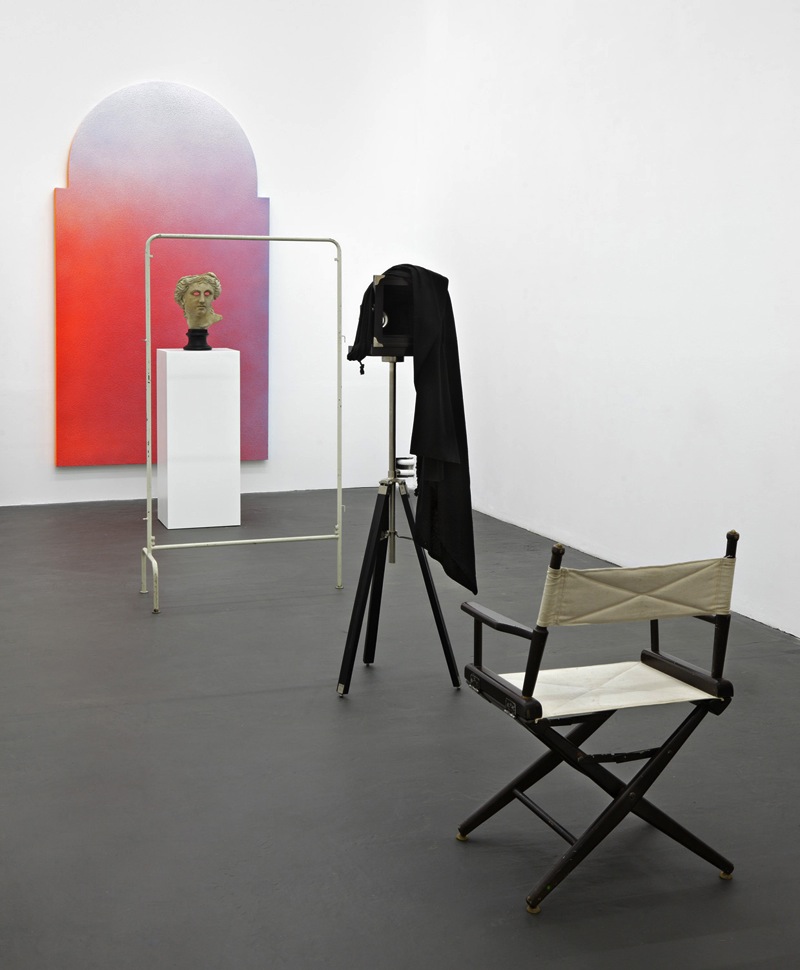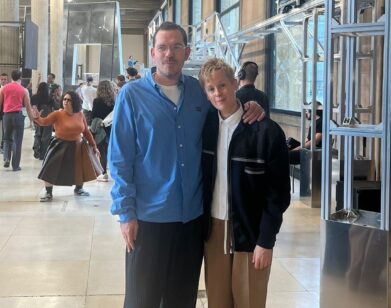Alex Israel’s Berlin Babylon

ALEX ISRAEL, INSTALLATION VIEW
COURTESY PERES PROJECTS
“I’m from Los Angeles, so I grew up in Hollywood, but was never a part of it,” says 29-year-old installation artist and writer Alex Israel. “Because I’ve always been an outsider, I’ve always been interested in the magic of the movies—in the connection between how they manipulate us and how art can manipulate us.” This fascination has taken shape as “Property,” Israel’s series of site-specific sculptures made from rented and temporarily transformed movie-house props. The objects, such as the director’s chair, pile of sex tapes, and toy Greyhound bus that appeared in the artist’s 2010 installation at the California Biennial, are selected and arranged by Israel to take on new meaning—in the case of the just-mentioned props, a comment on the accessibility of and compromise implicit in sleeping your way to the top. They’re returned to the prop houses and re-circulated into the movies when the exhibition ends.
Today, Israel takes “Property” a step further, with the opening of his first European solo show at Peres Projects in Berlin’s Kreuzberg [through Nov. 5]. “There will be props like I’ve shown before at the California Biennial and Greater L.A. in New York, but also a new element that’s never been seen before,” says Israel. The props—rented from studios in and around Berlin—include a classical guitar, a riding saddle, and a lone white swan. They’re surrounded by Israel’s new element: a line-up of sunburned orange and red-painted, stucco-coated wooden panels meant to look like the Spanish revival-style window and door frames used as sets during Hollywood’s Golden Age. Israel calls them “flats,” “And I like that their shapes will enhance and frame the Property.” He’ll also be selling 100 pairs of a special edition, unisex sunglass style—Autobahn by Freeway—that he created with his sunglass line, Freeway Eyewear, and Peres Projects specifically for the show. “Of course, the glasses themselves are frames,” says Israel, “When I was going through the prop houses, I found that most of the objects were like linguistic cognates—they mean the same thing, and can be constructed to communicate the same thing anywhere in the world.”






